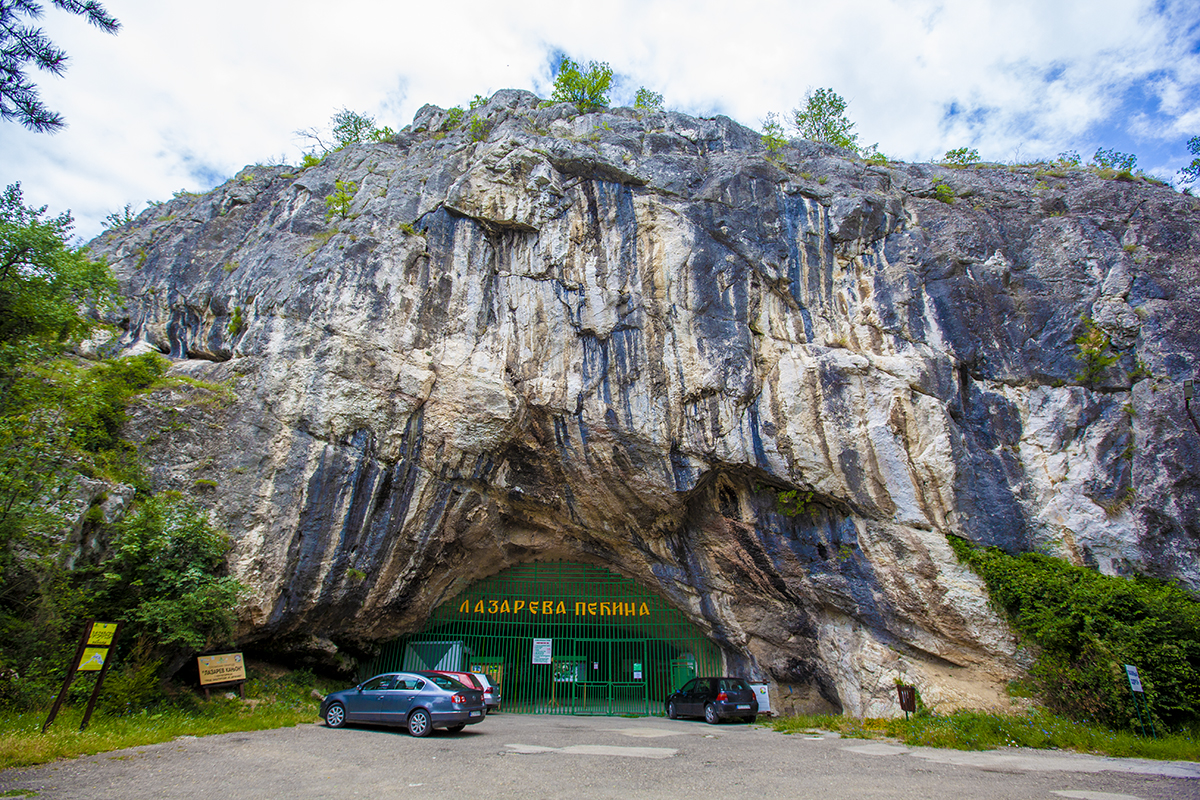Zlotska Pecina
Zlotske Caves - Lazareva Pecina - Лазарева пећина - Verknjica Pecina - Lazareva Cave - Verknjica Cave
Useful Information
Zlotska Pecina Slike
| Location: | In eastern Serbia close to the town of Zlot. 22km from Bors and 240km from Belgrade. |
| Open: | APR to OCT daily 10-16. [2020] |
| Fee: | Adults RSD 200. Groups (20+): Students RSD 150. |
| Classification: | Karst cave |
| Light: | electric |
| Dimension: | Lazareva Cave: L=1,592m, T=9-12°C, H=100%, A=291m asl. Verknjica Cave: L=1,530m, T=3-9°C, H=100%, A=454m asl. |
| Guided tours: | Lazareva Cave: D=40min, L=694m. Verknjica Cave: D=3h, L=620m. |
| Photography: | |
| Accessibility: | |
| Bibliography: | Dr Radenko Lazaravic (1978): Zlotske pecina, 122pp 50 photos / surveys. () |
| Address: | Information: Tourist Office Bors, Tel: +381-30-24166, Fax: +381-30-25961. Motel 'Zlotske pecine', 19215 Zlot, Phone: +381-30-71042. |
| As far as we know this information was accurate when it was published (see years in brackets), but may have changed since then. Please check rates and details directly with the companies in question if you need more recent info. | |

History
| 1882 | first exploration of Lazar's Cave by Felix Hoffman. |
| 1889 | speleological research of Lazar's Cave published by Jovan Cvijić. |
| 1953 | Lazar's Cave opened to the public. |
| 1959 | explored by D Dvetkovic, T Sava and B Markovic. |
| 1960-62 | explored by D Petrovitsch. |
| 1965 | explored by D Gavrilovic. |
| 1976 | explored by Radenko Lazaravic and the Speleological Group from Valjeva. |
| 1976 | Vernjikica opened to the public. |

Description
Lazar`s Cave, Lazareva Pecina, also known as Zlotska Cave, is the longest explored cave in Serbia with beautiful stalactites. Photo about caving, mining, formations - 178768300. Corded Ware in the Central and Southern Balkans: A Consequence of Cultural Interaction or an Indication of Ethnic Change? Aleksandar Bulatovic Archaeological Institute, Belgrade The analysis of corded ware and accompanying artifacts reveals the nature of its appearance across the Central and Southern Balkan Eneolithic during three cultural- chronological horizons.
In caves inhabited by man during the Palaeolithic (Risovaca, Prekonoska Pecina, Baranica, Smolucka Pecina), some of the faunistic remains are from hunted animals. Usacka pecina (23) + Lazareva (Zlotska) pecina (6) + Vernjikica (17) + Jerinina pecina + + Kovacevica pecina (37) + Salitrena pecina (81) + Visoka pecina +. Biciklom od Zajecara do sela Zlot a potom i na Vidikovac br2.
In the case of Zlotske Caves the plural is earned by the fact that there are two different caves, connected by a footpath cut into the cliffs. They are called Lazareva Cave (Lazar's Cave, Lazarus Cave) and Vernjikica. Vernjikica cave is located on the left side of the Lazareva reka canyon, about 1.5km upstream from Lazareva. Lazarev kanjon (Lazarus Canyon) is a sight of its own, with steep limestone cliffs, it was formed by the cave river from the lower level of Vernjikica cave. The eastern foothills of the Kučaj mountain are full of caves, around the village of Zlot 222 caves are registered in the cave registry.
Lazareva Cave has two different levels, the upper level is toured. The lower level contains the underground Lazar River. The resurgence of the cave river is 7m lower and in frot of the cave entrance. In the cave archaeological remains from Copper Age through Late Bronce Age to Iron Age were excavated. Also the cave was frequented by animals during the Pleistocene, numerous bones were found. The bones of a lion and a bear are on display in the cave.
A legend about Lazar's Cave tells that hajduks hid in it during the rule of the Turks. When the Turks found out they blocked the entrance to the cave. But their blockade was easily destroyed by the cave river.

Zlotska Pecina
The Girl's Room was the place where the hajduks hid their daughters so that the Turks would not take them to the harem. The access to the chamber is a gradually narrowing passage, and at the end only one person at a time can pass through. The Turk which first protruded the head was greeted by a machete.
The cave is also famous for numerous bats. 24 of the 27 species of bats in Europe where found in Bat Hall. This hall is not part of the cave tour to protect the bats.

The tour through Vernjikica Cave shows eleven chambers: Prijmna, Kaskadna, Vilingrad, Koloseum, Mramorje, Gotska Katedrala, Dvorana Oruzja, Venerin Ham and Siparska Dvorana. Vilingrad is the largest chamber by surface, 2,950m², and got its name from the fantastic stalagmite shapes. The guides point out men, animals, flowers and a complete cave family from grandmother to a dog. Koloseum is the largest chamber in Serbia, 60m long, 55m wide, with a surface of 2,575m². The ceiling is up to 51m high and the volume is aid to be 90,000m³. It was named colosseum because of its circular shape and ruined columns. The biggest stalagmites in this chamber are Godzila (10m high), Toranj (9.5m high), Vecin Sesir (9.5m high), Minare (10.5m high), Kriva Crvena Kula (18m high, 8m in diameter), and Vavilonska Kula (22m high, 11m in diameter).

Motel Zlotska Pecina
The Gotska Katedral (Gothic Cathedral) contains a lace of flowstone. Venerin Ham (Temple of Venus) has formations of pure white calcite. The centrepiece is Pecinska Verna (Cave Venus), a 3m high stalagmite, in the shape of a woman with raised hair. It resembles the famous Venus painting by Sandro Botticelli.
Zlotska Pecina Restoran
- See also